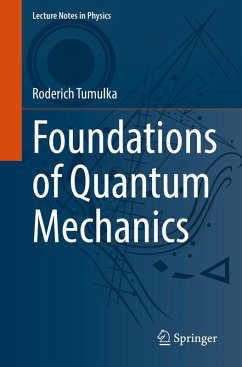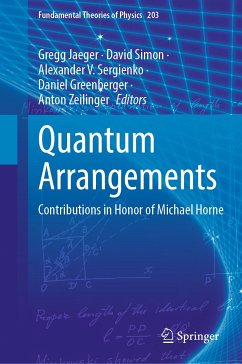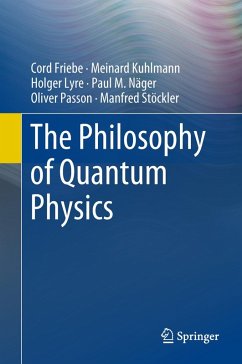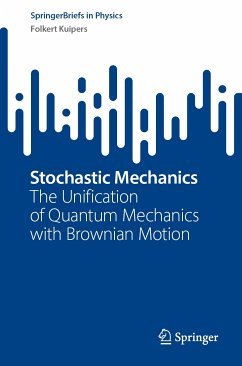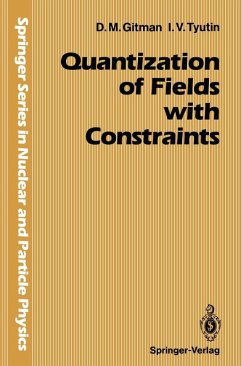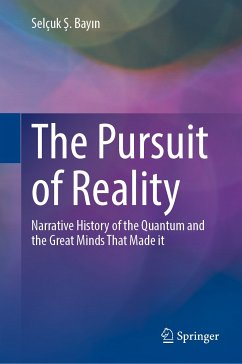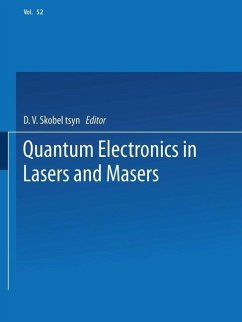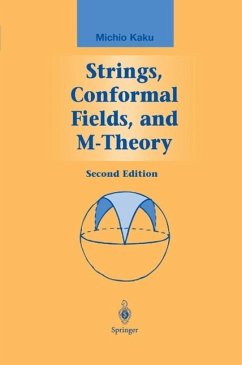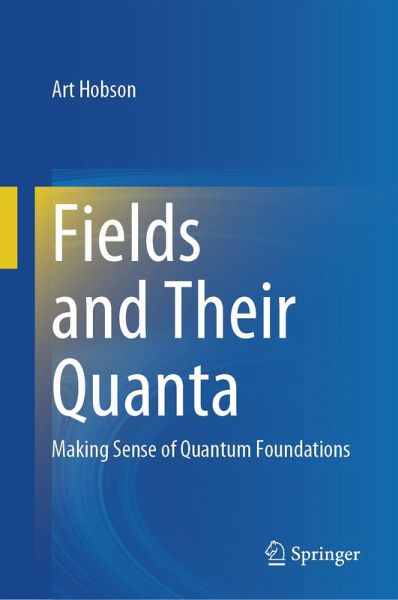
Fields and Their Quanta (eBook, PDF)
Making Sense of Quantum Foundations
Versandkostenfrei!
Sofort per Download lieferbar
120,95 €
inkl. MwSt.
Weitere Ausgaben:

PAYBACK Punkte
60 °P sammeln!
Because of continuing debates about foundational issues as well as the recent consensus about non-locality, it is time to resolve the long-standing quantum enigmas. These include wave-particle duality, the double-slit experiment, quantum randomness, entanglement, superpositions, and measurement. This book presents that resolution, based on the insights that (1) quantum field theory tells us that reality comprises a set of universal quantized fields that fill the universe and (2) standard quantum mechanics is the non-relativistic limit of quantum field theory. An immediate consequence is that t...
Because of continuing debates about foundational issues as well as the recent consensus about non-locality, it is time to resolve the long-standing quantum enigmas. These include wave-particle duality, the double-slit experiment, quantum randomness, entanglement, superpositions, and measurement. This book presents that resolution, based on the insights that (1) quantum field theory tells us that reality comprises a set of universal quantized fields that fill the universe and (2) standard quantum mechanics is the non-relativistic limit of quantum field theory. An immediate consequence is that there are no particles and that quanta such as photons and electrons are highly unified ("coherent"), spatially extended bundles of field energy. Every quantum object is always a wave in a field. It is never a particle. As Steven Weinberg puts it, "The basic ingredients of nature are fields; particles are derivative phenomena." This immediately resolves, for one example, the puzzle of the double-slit experiment in which quanta such as photons and electrons individually interfere like waves as they pass through the slits yet they impact the screen like tiny particles. The resolution: each photon or electron is actually a wave that extends coherently across both slits and across the entire interference pattern, and collapses to a far smaller, atom-sized wave (not a particle) upon entangling non-locally with the screen. Thus quantum physicists can finally get their act together. It's about time: After more than 120 years, quantum physics still harbors embarrassing puzzles and physicists remain unable to reach a consensus about what the theory means. Large questions like "What is quantum physics about?" and "What is the meaning of the quantum state?" elicit diverse replies, all different yet all offered with supreme confidence. Every science has healthy differences of opinion, but quantum physics is beyond the pale.
As Fields and their Quanta shows, we can dispense with the diverse interpretations such as consciousness-based views, the hypothesis that other universes are involved in wave function collapse, and the Copenhagen view that there is no quantum world. We can probably also dispense with the suggested reformulations such as the guiding wave hypothesis and various collapse mechanisms, although experimental tests of these are worth doing. Most of these are inspired by the measurement problem, but recent clarification concerning entanglement and non-locality shows that the measurement process is not paradoxical, and that standard quantum physics predicts collapse to a single outcome.
Quantum physics can thus return to being a normal, objective, scientific endeavor with no special interpretation outside of standard (since Copernicus) scientific realism: Nature exists on its own with no need for observers, and we learn about nature by applying logical reasoning to natural phenomena as revealed by observation and experiment.
As Fields and their Quanta shows, we can dispense with the diverse interpretations such as consciousness-based views, the hypothesis that other universes are involved in wave function collapse, and the Copenhagen view that there is no quantum world. We can probably also dispense with the suggested reformulations such as the guiding wave hypothesis and various collapse mechanisms, although experimental tests of these are worth doing. Most of these are inspired by the measurement problem, but recent clarification concerning entanglement and non-locality shows that the measurement process is not paradoxical, and that standard quantum physics predicts collapse to a single outcome.
Quantum physics can thus return to being a normal, objective, scientific endeavor with no special interpretation outside of standard (since Copernicus) scientific realism: Nature exists on its own with no need for observers, and we learn about nature by applying logical reasoning to natural phenomena as revealed by observation and experiment.
Dieser Download kann aus rechtlichen Gründen nur mit Rechnungsadresse in A, B, BG, CY, CZ, D, DK, EW, E, FIN, F, GR, HR, H, IRL, I, LT, L, LR, M, NL, PL, P, R, S, SLO, SK ausgeliefert werden.



